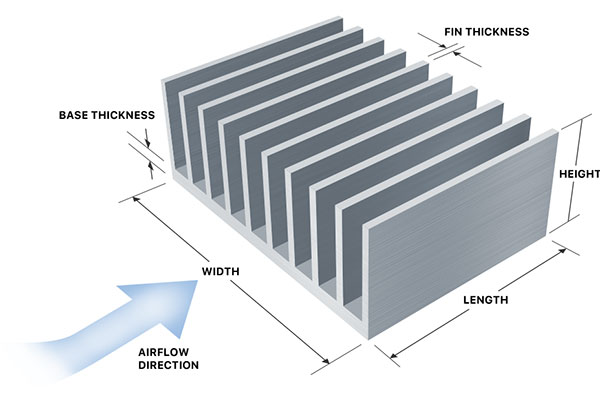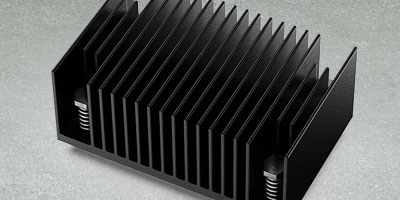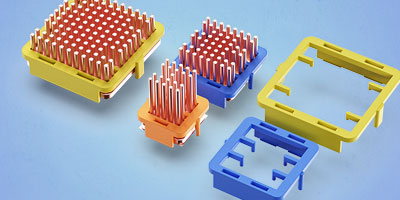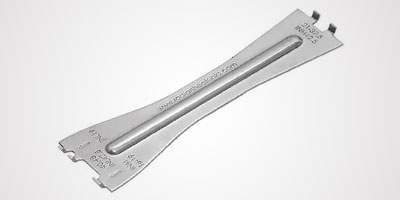
Why use a Heatsink Calculator?
Using a heatsink calculator can serve as an excellent initial step to guide you towards the right thermal solution for your application. To ensure that a heat sink functions properly, various factors such as duct velocity, total resistance, case temperature, pressure drop, and fin efficiency have to be calculated precisely. Our heat sink calculator offers support for engineers and designers in determining the effectiveness of these parameters.
Employing a heatsink calculator for devices with low to medium power requirements can often save you time compared to using Computational Fluid Dynamics (CFD) software, which involves detailed modeling, inputting boundary conditions, determining mesh sizes, and so on. Through using a heatsink calculator, you might realize that your current solution is overly robust, and by adjusting the fin density or opting for a smaller heatsink, you can still achieve the desired outcome within the maximum ambient temperature limit. Additionally, you may find that simply upgrading your system's fans to improve airflow represents a cost-effective approach to addressing thermal issues within your system using the heatsink calculator.
Radian Thermal Products inc.’s Heatsink Calculator
Our online heat sink calculator provides the results with Duct Velocity values (LFM) from 100 to 800 to the nearest 3 decimals based on the accurate values for parameters such as the heat sink material (aluminum or copper), dimensions, airflow rate, and power dissipation.
The duct velocity will indicate how fast air is moving through the heat sink, the total resistance will indicate the overall resistance to heat flow in the system, the case temperature will indicate the temperature of the heat sink surface, the pressure drop will indicate the change in pressure as air flows through the heat sink, the fin efficiency will indicate how well the fins are transferring heat, and the Reynolds number will indicate the flow regime through the channel.
If you're uncertain about the necessary size or type of heatsink required to meet your thermal resistance specifications, try inputting specific variables within the heatsink calculator to help steer you toward the correct thermal solution. You might even discover the need for a more intricate solution beyond a basic solid material plate heatsinks.
If you have a heatsink design that you would like to repurpose or recycle for use in a new product, you can input the specifications of the existing heatsink into the calculator to determine the airflow required at the heatsink for it to be effectively reused in your new product. This approach can help you assess whether the existing heatsink design is suitable for your new application and whether any adjustments are needed to optimize its performance.
Did you not find your solution through the Heatsink Calculator?
To inquire about the specific processes required to achieve the necessary thermal solution, please contact sales@radianheatsinks.com Someone will work with you personally on how to meet your requirements effectively with other technologies Radian offers.




